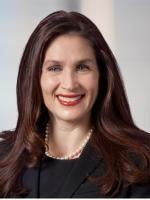Introduction
On April 17, 2019, the Internal Revenue Service (the “IRS”) and the U.S. Department of the Treasury (the “Treasury”) issued a second set of proposed regulations (the “Proposed Regulations”) under section 1400Z-2 of the Internal Revenue Code (the “Code”) regarding the qualified opportunity zone program, which was enacted as part of the law commonly referred to as the “Tax Cuts and Jobs Act” (“TCJA”).[1]
The Proposed Regulations are very taxpayer friendly, and address some, but not all, of the questions that were left unanswered by the first set of proposed regulations issued in October 2018 (the “Initial Proposed Regulations”). The Initial Proposed Regulations were discussed here.
The Proposed Regulations generally are proposed to be effective on or after the date of the publication of final regulations. Nevertheless, taxpayers and qualified opportunity funds (“QOFs”) may generally rely on the Proposed Regulations, so long as the taxpayer and/or the QOF applies the Proposed Regulations consistently and in their entirety. However, taxpayers may not rely on the rules that permit a QOF partnership, S corporation, or REIT whose owners have held their QOF interests for at least 10 years to sell assets without its owners recognizing capital gains on the sale, until the Proposed Regulations are finalized.
Some states conform to federal tax law with respect to QOFs (and grant equivalent tax benefits); others do not and tax gains that would otherwise be deferred, reduced or eliminated under the opportunity zone program.
This blog summarizes some of the important aspects of the Proposed Regulations. It assumes familiarity with the opportunity zone program. For background, see our prior blog post.
Discussion
1. All Gain on the Sale of an Interest in a QOF After 10 Years is Excluded; Depreciation Recapture is Not Taxed.
Under section 1400Z-2(c), a taxpayer that has held a qualifying interest in a QOF for at least 10 years may elect to treat its basis in the interest in the QOF as an amount equal to the fair market value of the interest in the QOF on the date of its sale or exchange (the “step-up election”).[2] The legislative history to section 1400Z-2(c) provides that only capital gain may be excluded as a result of the step-up election.[3] Accordingly, the legislative history suggests that a taxpayer would be required to include in income any depreciation recapture or other ordinary income realized in connection with the sale of an interest in a QOF.
In a very taxpayer favorable rule, however, the Proposed Regulations provide that if a taxpayer makes the step-up election, then all gain may be excluded, including any gain attributable to depreciation recapture or ordinary income assets.[4] Accordingly, under the Proposed Regulations, a taxpayer that sells an interest in a QOF that has been held for at least 10 years may avoid all tax on appreciation.
2. No Tax on Capital Gains from the Sale of the Underlying Assets of a QOF Partnership, S Corporation, or REIT Held for At Least 10 Years; However, Depreciation Recapture and Ordinary Income is Taxed, and Restrictions Apply.
The Proposed Regulations permit an investor that has held a qualifying interest in a QOF partnership or a S corporation for at least 10 years to elect to exclude capital gains realized by the QOF partnership or S corporation on the sale of the underlying QOF assets to the extent the QOF partnership or S corporation separately states the capital gain arising from the asset sale on the investor’s Schedule K-1 (the “asset sale election”).[5] Accordingly, so long as an investor has held its investment in a QOF partnership or S corporation for at least 10 years, if the QOF sells its individual assets after that 10-year mark and separately states the capital gain arising from the sale on a Schedule K-1, then the investor can elect to exclude the capital gain on the sale from its income. In addition, under the Proposed Regulations, a QOF that is a real estate investment trust (a “QOF REIT”) may sell individual assets at different times and declare capital gain dividends. In this case, shareholders who have held the QOF REIT shares for at least 10 years will not be taxed on the capital gains dividends.
The asset sale election introduces an exit strategy that allows a QOF to sell underlying assets one at a time and relieves investors from having to find a buyer for their QOF interests. However, in contrast to the step-up election for interests in a QOF, the asset sale election permits only capital gains to be excluded; the investor must recognize any depreciation recapture or other ordinary income realized on the underlying asset sale. It is unclear whether this distinction was intentional, and whether the final regulations will also permit depreciation recapture and other ordinary income to be excluded in connection with an asset sale election. In addition, an asset sale election may only be made in respect of property generating section 1231 gain to the extent of the net section 1231 capital gain reported by a QOF partnership or S corporation on a Schedule K-1 for the year.[7] Finally, the Proposed Regulations expressly permit only the sale of underlying QOF assets by a QOF, and not by a lower-tier “zone entity” held by the QOF (as defined below). Accordingly, investors in a QOF that operates through zone entities may benefit from the asset sale election only if the QOF sells its assets (including its interest in a zone entity); however, gain on assets sold by a zone entity remains subject to tax under the Proposed Regulations.
In contrast to the Initial Proposed Regulations and the rest of the Proposed Regulations, taxpayers cannot rely on these rules until the Proposed Regulations are finalized.[8] Although these rules will not be relevant for ten years, they could affect QOF structuring decisions.
3. Debt-Financed Distributions from QOF Partnerships Are Permitted.
The statute provides that an investor’s initial basis in a QOF interest is zero.[9] Prior to the issuance of the Proposed Regulations, it was unclear whether an investor’s basis in a QOF partnership interest would be increased by the investor’s share of partnership debt, and, therefore, whether QOF partnerships could make tax-free debt-financed distributions. The Proposed Regulations provide that a partner’s initial basis in its QOF partnership interest is increased by the partner’s allocable share of QOF partnership liabilities,[10] thereby generally allowing a QOF partnership to make debt-financed distributions to its partners without triggering income recognition to the partners.[11] However, the Proposed Regulations provide that, to the extent a QOF partnership makes a debt-financed distribution that is treated as a “disguised sale” pursuant to existing partnership disguised sales rules (which presume that any distribution within two years of a contribution is a disguised sale), the partner’s contribution will not be eligible for the tax benefits of the opportunity zone rules.[12]
4. Leasing (But Not Triple-Net-Leasing) is an Active Trade or Business.
A QOF can invest indirectly through a partnership (a “zone partnership”) or a corporation (a “zone corporation” and collectively, “zone entities”), each of which must be engaged in a “qualified opportunity zone business” (“zone business”). One of the requirements for a zone business under the statute is that at least 50% of the total gross income of a zone entity must be derived from the active conduct of a trade or business within a qualified opportunity zone (“QOZ”).[13] Prior to the Proposed Regulations, it was unclear whether leasing activities qualified as an active conduct of a trade or business.
The Proposed Regulations provide that leasing real property qualifies as the active conduct of a trade or business solely for purposes of satisfying this active trade or business requirement,[14] however, merely entering into a triple-net-lease with respect to real property owned by a taxpayer is not the active conduct of a trade or business by that taxpayer. While the Proposed Regulations do not define a “triple-net-lease”, IRS Notice 2019-07, released concurrently with the recently proposed regulations under section 199A, provides that a triple-net-lease includes a lease agreement requiring the tenant or lessee to pay taxes, fees and insurance, and to be responsible for maintenance activities for a property in addition to rent and utilities.[15]IRS Notice 2019-07 also contains a safe harbor that provides that spending 250 hours a year on leasing activities gives rise to a trade or business for purposes of section 199A. The Proposed Regulations contain no similar safe harbor.
5. 90% Test: Six-Month Relief for Newly Contributed Assets and One-Year Reinvestment Grace Period; However, Gain Recognized on Sale of Assets before 10 Years.
At least 90% of a QOF’s assets are required to consist of qualified opportunity zone property (the “90% test”). [16] Qualified opportunity zone property is qualified opportunity zone stock, qualified opportunity zone partnership interests or qualified opportunity zone business property (“zone business property” and collectively, “zone property”). The 90% test is measured semi-annually on (x) the last day of the first six-month period of the taxable year of the QOF; and (y) on the last day of the taxable year of the QOF (e.g., June 30 and December 31 would be the relevant testing dates for a calendar-year QOF).[17]
Six-Month Relief From 90% Test for Newly Contributed Assets. The Proposed Regulations provide that a QOF may choose to exclude any contribution of assets received during the prior six months for purposes of determining its compliance with the 90% test, so long as the contribution is continuously held in cash, cash equivalents, or debt instruments with a term of 18 months or less.[18] Accordingly, QOFs will have at least six months, and as long as one year, after the contribution of assets before the 90% test must be satisfied taking into account those assets. Thus, if assets are contributed on June 30th, a calendar year QOF will have until December 31st to satisfy the 90% test, taking into account the June 30 assets. If assets are contributed on July 1st, a calendar year QOF will have until the following June 30th to satisfy the 90% test, taking into account the July 1st assets.
One-Year Reinvestment Grace Period. A QOF that sells an asset for cash immediately before a measurement date could have difficulty meeting the 90% test. However, the statute authorizes the IRS to issue regulations to ensure that a QOF has a “reasonable period of time to reinvest the return of capital” from investments in zone property.[19] Pursuant to this authority, the Proposed Regulations provide a QOF with a one-year grace period to reinvest proceeds from the interim sale or disposition of zone property without the uninvested proceeds causing the QOF to fail to meet the 90% test, (as long as the proceeds are continuously held in cash, cash equivalents, or debt instruments with a term of 18 months or less until reinvestment).[20]The one-year grace period is extended if the failure to reinvest the proceeds by the deadline is attributable to a delay in government action on an application (e.g., for a building permit) that is completed during the one-year period.[21]
These interim asset sales do not reset an investor’s holding period with respect to its investment in the QOF and do not trigger the inclusion of any gain deferred in connection with the investment in the QOF (so long as the sale proceeds are timely reinvested in zone property by the QOF).
Nevertheless, the Proposed Regulations generally require investors to recognize gain on the QOF’s sale of the zone property. For example, if a QOF partnership sells zone property and realizes gain on that sale, the investor will have to recognize its allocable share of the realized gain unless it (i) has held its interest in the QOF partnership for at least 10 years (and, in this case, as discussed above, under the Proposed Regulations only capital gain could be excluded), or (ii) elects to defer tax on any realized capital gain by reinvesting a corresponding amount in a QOF (either the same QOF partnership or a different QOF) within the relevant 180-day period.[22] In the event that an amount corresponding to the capital gain is reinvested in a QOF, the investor would have a new QOF interest with a holding period that begins on the date of the reinvestment.
6. Unimproved Land and Buildings Vacant for Five Years Can Be “Good Assets”.
Under the statute, in order for property to qualify as zone business property, either the “original use” of the property in a QOZ must begin with a QOF or a zone entity (the “original use requirement”) or, if property that existed in the QOZ is purchased, an amount equal to the purchase price of the property must be used to improve the property (the “substantial improvement requirement”).[23]
Unimproved Land. It was uncertain under the statute and Initial Proposed Regulations whether an investment in unimproved land could qualify as zone business property. The Proposed Regulations clarify that unimproved land within a QOZ that is acquired by purchase does not need to satisfy the original use test or be substantially improved to qualify as zone business property,[24] so long as the land is used in a trade or business of a QOF or zone business and, at the time of acquisition, the QOF or zone business has an expectation, an intention, or a view to improve the land by more than an insubstantial amount within 30 months after the date of purchase. [25] It is unclear how much improvement is needed to satisfy the “more than an insubstantial amount” test. Nevertheless, if a significant purpose of a QOF or zone business for acquiring unimproved land was to achieve an “inappropriate tax26] result”, the general anti-abuse rule set forth in the Proposed Regulations (discussed below) would apply to disqualify the unimproved land as zone business property.
It is entirely unclear what an inappropriate tax result would be in this context. For example, assume that property has an existing building on it. It is uncertain whether the buyer could require the seller to demolish the building before the buyer purchases the land so that the buyer need only improve the land by more than an insubstantial amount (rather than by the value of the building). Similarly, after the purchase, it is unclear whether the buyer could pave the land and operate a parking lot business, or lease it to a related party and treat that lease as a trade or business.[27]
Vacant Building. Notwithstanding the “original use” or “substantial improvement” requirements of the statute, the Proposed Regulations contain a generous rule that (i) permits a QOF or zone business to treat an investment in a previously used building or other structure that has been vacant for at least five consecutive years before the QOF or zone business places the property in service in the QOZ as an original use of the asset, and (ii) does not require the QOF or zone business to invest any additional amount to substantially improve the building or other structure.[28]
7. Certain Leased Property is Eligible Zone Business Property.
In order for tangible property to be considered zone business property, the statute requires the property to have been acquired by the QOF or zone business by purchase after December 31, 2017.[29] Commentators questioned whether tangible property leased by a zone business could satisfy this requirement. The Proposed Regulations provide helpful guidance that generally treats tangible property leased pursuant to a contract entered into after 2017 as zone business property so long as (i) the terms of the lease are arm’s length and reflect a market rate, and (ii) substantially all (i.e., 70%) of the use of the leased property is in a QOZ during substantially all (i.e., 90%) of the period for which the zone business leases the property.[30]
There is no original use or substantial improvement requirement with respect to leased tangible property.[31]In other words, a QOF or zone business can lease tangible property that has previously been used in the QOZ and does not need to make any improvements to the property for the leased property to be zone business property. Any improvements to the leased property made by the lessee are treated as original use property purchased by the QOF or zone business for an amount equal to the unadjusted cost of the improvements.
In addition, unlike purchased property, leased tangible property can be leased from a related party so long as (i) the QOF or zone business does not prepay more than 12 months of the lease at a time, and (ii) the QOF or zone business purchases additional tangible property with a value at least equal to the value of the lease no later than the earlier of the end of the lease or 30 months after the date the QOF or zone business takes possession of the leased property and there is substantial overlap of zones in which the purchased and leased property are used.[32] Accordingly, these rules seem to allow a taxpayer who has operated a business in a QOZ, and has owned property used in that business in the QOZ since before 2017, to sell the property to an unrelated party, create a QOF, and cause the QOF to lease the property back from the purchaser and run the business.
8. Safe Harbors for 50% Gross Income Test.
As mentioned above, a zone entity must derive at least 50% of its gross income from the active conduct of a trade or business.[33] The Proposed Regulations provide three safe harbors and a facts and circumstances test that would allow a zone entity to satisfy the 50% active trade or business requirement. A trade or business will qualify for a safe harbor if:
- At least 50% of the services performed – based on hours – for the business by its employees and independent contractors (and their employees) are performed within the QOZ (the “hours safe harbor”),
- At least 50% of the services performed – based on amounts paid by the trade or business – for the business by its employees and independent contractors (and their employees) are performed within the QOZ (the “compensation safe harbor”) or
- (1) the tangible property of the business located in the QOZ and (2) the management or operational functions performed for the business in the QOZ are each necessary to generate 50% of the gross income of the trade or business (the “management and property safe harbor”).[34]
A trade or business that does not meet any of the safe harbors may alternatively rely on a facts and circumstances test.[35]
Assume a startup business located in a QOZ develops software applications for global sale. So long as the employees and independent contractors of the startup devote the majority of their time developing the software within the QOZ, the startup business would satisfy the hours safe harbor, even if the sales are made outside the QOZ. Alternatively, if the startup business uses a service center located outside the QOZ and the majority of the total hours spent by the startup’s employees and independent contractors occur at the service center, so long as the business pays 50% of its total compensation for software development services to employees and independent contractors in the QOZ, the business could satisfy the compensation safe harbor.
These rules would also permit an investment fund manager to be organized as a QOF. The manager could lease space in a building located in a QOZ and either ensure that (i) 50% of the total number of hours of services are provided by employees or independent contractors within the QOZ (i.e., lower-compensated employees could be in the QOZ and highly compensated employees could remain outside of the QOZ) or (ii) 50% of the value of services are performed by employees or independent contractors within the QOZ (i.e., highly compensated employees would be in the QOZ). Moreover, amounts contributed to the QOF and used to pay salary and rent could allow deferral of an equal amount of the owner’s capital gains. Finally, organizing an investment fund manager as a QOF would allow the owners of the manager to avoid tax on a sale of their interests in the manager after 10 years.
9. Secondary Market Purchases Eligible for Deferral.
The statute generally provides that a taxpayer may elect to defer capital gain from the sale or exchange of property with an unrelated person by investing all or part of the capital gain in a QOF within 180 days after the sale or exchange.[36] The Proposed Regulations allow a taxpayer to treat the purchase of a QOF interest from another person as a qualifying “investment” in a QOF equal to the amount paid for the QOF interest.[37]Thus, secondary market purchases of eligible QOF interests from a person other than a QOF are treated as investments in a QOF, with an amount equal to the purchase price eligible for the deferral election.
10. Expansion of the 31-Month Working Capital Safe Harbor for Zone Entities, But Remains Unavailable for Opportunity Funds.
The statute permits a QOF to invest directly in zone property or a zone entity. However, a QOF that invests directly in zone property must be engaged in a trade or business and no more than 10% of its assets may consist of cash. A zone entity in which a QOF invests must also be engaged in a trade or business and less than 5% of the unadjusted basis in its assets may be attributable to financial property (including cash), other than a reasonable amount of working capital.[38] These rules restricted the ability of QOFs and zone entities to receive capital and develop new businesses or construct or rehabilitate real estate and other tangible property. The Initial Proposed Regulations partially addressed this concern by permitting a zone entity that acquires, constructs, and/or substantially rehabilitates tangible business property to treat cash, cash equivalents and debt instruments with a term of 18 months or less as a reasonable amount of working capital for a period of up to 31 months if certain requirements are satisfied (the “working capital safe harbor”).[39] In addition, under the working capital safe harbor, tangible property that is being acquired, constructed and/or substantially improved with the working capital and that is expected to qualify as zone property after the expenditure of the working capital is treated as being used in the active conduct of a trade or business during the construction and improvement period.[40] Accordingly, if a zone entity raises cash that satisfies the working capital safe harbor and uses that cash to construct a building that is expected to qualify as zone property, the partially completed building will qualify as zone property during the construction phase. Moreover, any income earned on the working capital counts toward satisfying the 50% gross income test described above and the intangible property use requirement is generally deemed satisfied during the working capital safe harbor period.[41] However, the safe harbor does not apply to a QOF that directly holds working capital or constructs property.
The Proposed Regulations expand the working capital safe harbor beyond the acquisition, construction and/or substantial improvement of tangible business property to include the development of a trade or business in an opportunity zone,[42] and extend the 31-month period to the extent of governmental inaction or delay so long as the application for governmental action (i.e., for building permits, etc.) was completed within the 31-month period.[43] In addition, the Proposed Regulations provide that a zone business may benefit from multiple or sequential applications of the working capital safe harbor, so long as each application independently complies will all of the requirements of the safe harbor. However, the Proposed Regulations do not extend the working capital safe harbor to the QOF itself; it remains available only to zone entities.
11. Transactions that Trigger Recognition of Deferred Capital Gain.
The QOZ rules allow taxpayers to defer tax on capital gains to the extent a corresponding amount is used by the taxpayer to purchase interests in a QOF. The statute requires that the deferred capital gain be included in a taxpayer’s income in the taxable year that includes the earlier of (i) the date on which the taxpayer’s qualifying investment in a QOF is sold or exchanged, or (ii) December 31, 2026.[44] However, the statute does not directly address whether a non-sale or other disposition of an interest in a QOF requires a taxpayer to recognize its deferred gain.
The Proposed Regulations contain a broad and nonexclusive list of “inclusion events” that generally require the inclusion of deferred gain in income.[45] This list generally includes a gift or charitable contribution of a qualifying QOF investment, a section 332 liquidation of a QOF corporation,[46] various types of reorganizations and recapitalization of QOF corporations, and section 351 transactions involving the transfer of a taxpayer’s qualifying QOF stock.[47]
The Proposed Regulations also provide specific exceptions to the list of inclusion events. For instance, death is not an inclusion event.[48] A gift of a qualifying investment by a taxpayer to a grantor trust of which the taxpayer is the deemed owner is not an inclusion event.[49] Certain section 381 transactions are not inclusion events.[50] Spinoff transactions are also excluded from the list of inclusion events so long as both the distributing and controlled corporations are QOFs immediately after the spinoff transaction.[51] Lastly, a section 721(a) contribution of a QOF interest to a partnership is not an inclusion event. [52] Thus, it appears that an investor may contribute its QOF interest to a feeder fund or other partnership entity without triggering recognition of any deferred gain or disqualifying the interest from the QOZ benefits. However, the Proposed Regulations do not appear to permit investors to initially invest in a feeder fund that, in turn, invests in a QOF and so, absent additional guidance, this aspect of the Proposed Regulations will have only limited applicability.
12. General Anti-Abuse Rule.
The Proposed Regulations include a general anti-abuse rule that gives the IRS broad discretion to disregard or recharacterize any transaction if, based on the facts and circumstances, a significant purpose of the transaction is to achieve tax results inconsistent with the purposes of section 1400Z-2.[53] The Preamble provides that Treasury would apply this anti-abuse rule to the passive ownership of land for speculation in which no new investment is made (i.e., “land banking”).[54] However, it is unclear what would be considered “land banking” and whether, for example, a taxpayer could buy raw land, pave it, and open a parking lot business, or lease the paved land. Moreover, because section 1400Z-2 is a highly technical statute containing arbitrary rules and with purposes that are unclear, it will be very difficult for taxpayers and the IRS to apply the anti-abuse rule.
13. “Substantially All” Means 90% for Purposes of Holding Period and 70% for Purposes of Use.
The phrase “substantially all” appears in various places throughout the statute. The Proposed Regulations, together with the Initial Proposed Regulations, provide that the meaning of the phrase in different contexts is as follows:
- During 90% of a QOF’s holding period for the interests in a zone entity, the zone entity must qualify as a zone business.[55]
- At least 70% of the tangible property owned or leased by the zone entity must be zone business property.[56]
- During 90% of a QOF’s or zone entity’s holding period for zone business property, 70% of the use of the property must be in the QOZ as part of a trade or business.[57]
To summarize, if the term “substantially all” relates to holding period, it means 90% and if it relates to use of property (either directly owned by a QOF or owned or leased by a zone business), the term means 70%. Because of the way these different threshold requirements interact, a qualifying QOF could potentially hold less than 40% of its assets effectively in use within a QOZ. This could occur if (1) 90% of a QOF’s assets are invested in a zone business, in which 70% of the tangible assets of that business are zone business property, and (2) the zone business property is 70% in use within a QOZ for 90% of the zone business’ holding period of that zone business property (i.e., 90% x 70% x 70% x 90% = 39.7%).
14. Only 40% of Intangibles Must Be Used in the Zone Business.
The statute requires a “substantial portion” of the intangible property of a zone entity to be used in the conduct by the zone entity of a zone business.[58] The Proposed Regulations provide that, for these purposes, the term substantial portion means at least 40%.[59]
15. A QOF Corporation Cannot Be a Member of a Consolidated Group.
The Proposed Regulations provide that QOF stock is treated as not stock for purposes of the consolidated return rules.[60] Accordingly, while a QOF C corporation may be the common parent of a consolidated group, it may not be a subsidiary member of a consolidated group.[61] The Proposed Regulations also provide that the opportunity zone rules apply separately to each member of a consolidated group.[62] Therefore, the same member of the group must both engage in the sale of a capital asset giving rise to gain, and timely invest an amount equal to some or all of such gain in a QOF in order to benefit from deferral under the statute.[63]
16. Mixed-Funds Investments; Carried Interest Not Eligible for Opportunity Zone Benefits.
The Proposed Regulations contain new details regarding the treatment of mixed-funds investments. In general, a mixed-funds investment is one in which a partner (i) contributes to a QOF property with a value in excess of its basis, (ii) contributes to a QOF cash in excess of the partner’s eligible gain for which a deferral election has been made, or (iii) receives a partnership interest in exchange for services (i.e., a carried interest).[64]
Thus, if an investment fund sponsor makes an investment in a QOF with funds attributable to capital gains for which a deferral election has been made and also receives a carried interest in the QOF in exchange for services, the sponsor will be treated as having a mixed-funds investment. The tax benefits of the opportunity zone rules only apply to the deferred capital gain amount and not the amount attributable to the carried interest. Under the Proposed Regulations, the amount attributable to the carried interest is the highest percentage interest in residual profits attributable to the carried interest.[65] The Proposed Regulations provide that a partner holding a mixed-funds investment will be treated as holding a single partnership interest with a single basis and capital account for purposes of subchapter K.[66] However, for purposes of section 1400Z-2, that partner will be treated as holding two interests—one interest attributable to the deferred gain (the “qualifying investment”) and the other interest attributable to the excess investment and/or service component (the “non-qualifying investment”).[67] All partnership items, including partnership debt, are allocated pro rata between the qualifying and non-qualifying investments, based on the relative allocation percentages of each interest.[68]
17. Additional Reporting Requirements.
A QOF must file an IRS Form 8996 with its federal income tax return for initial self-certification of QOF status and for annual reporting of compliance with the 90% test. The Preamble provides that the Form 8996 could require additional information such as the employer identification number (EIN) of a zone business owned by a QOF and the amount invested by QOFs and zone businesses.[69] However, these requirements will not apply before tax year 2019.
[1] All section references are to the Internal Revenue Code of 1986, as amended, and the Proposed Regulations.
[2] Section 1400Z-2(c).
[3] Conf. Rep. No. 115-466, at 538 (2017).
[4] Prop. Reg. § 1.1400Z-2(c)-1(b)(2)(i).
[5] Prop. Reg. § 1.1400Z-2(c)-1(b)(2)(ii).
[6] Prop. Reg. § 1.1400Z-2(c)-1(b)(2)(ii)(A)(1).
[7] Prop. Reg. § 1.1400Z-2(c)-1(b)(2)(ii)(A)(2). “Section 1231 gain” generally means any recognized gain on the sale or exchange of real or depreciable property used in the trade or business and held over one year.
[8] Prop. Reg. § 1.1400Z-2(c)-1(f).
[9] Section 1400Z-2(b)(2)(B)(i).
[10] See Prop. Reg. § 1.1400Z-2(b)-1(g)(3).
[11] See Prop. Reg. § 1.1400Z-2(b)-1(f)(10), Example 10.
[12] Prop. Reg. § 1.1400Z-2(a)-1(b)(10)(ii)(A)(2).
[13] Section 1400Z-2(d)(3)(A).
[14] Prop. Reg. § 1.1400Z-2(d)-1(b)(4).
[15] IRS Notice 2019-07, https://www.irs.gov/pub/irs-drop/n-19-07.pdf. For more on IRS Notice 2019-07, please see our prior blog post.
[16] Section 1400Z-2(d)(1).
[17] Section 1400Z-2(d)(1).
[18] Prop. Reg. § 1.1400Z-2(d)-1(b)(4).
[19] Section 1400Z-2(e)(4).
[20] Prop. Reg. § 1.1400Z-2(d)-1(b)(4)(A)-(C).
[21] Prop. Reg. § 1.1400Z-2(f)-1(b).
[22] Section 1400Z-2(a).
[23] Section 1400Z-2(d)(2)(D).
[24] Prop. Reg. § 1.1400Z-2(d)-1(c)(8)(ii)(B); -1(d)(4)(ii)(B).
[25] Prop. Reg. § 1.1400Z-2(d)-1(f).
[26] Prop. Reg. § 1.1400Z-2(f)-1(c) (general anti-abuse rule).
[27] As mentioned above, leasing (other than triple-net-leasing) is an active trade or business for purposes of the opportunity zone rules.
[28] Prop. Reg. § 1.1400Z-2(d)-1(c)(7).
[29] Section 1400Z-2(d)(2)(D)(i)(I).
[30] Prop. Reg. § 1.1400Z-2(d)-1(c)(4)(B).
[31] Preamble at 20-21.
[32] Prop. Reg. § 1.1400Z-2(d)-1(c)(4)(i)(B)(4), (7).
[33] Section 1400Z-2(d)(3)(A)(ii) (cross-referencing a requirement under section 1397C(b)(2)).
[34] Prop. Reg. § 1.1400Z-2(d)-1(d)(5)(i)(A)-(C). For the purposes of meeting the third safe harbor, the Proposed Regulations provide that the presence of the PO Box or other delivery address alone, even if the mail received at that PO Box is fundamental to the income of the business, does not constitute a factor necessary to generate gross income by the business. Prop. Reg. § 1.1400Z-2(d)-1(d)(5)(i)(E)(2), Example 2.
[35] Prop. Reg. § 1.1400Z-2(d)-1(d)(5)(i)(D).
[36] Section 1400Z-2(a)(1)(A).
[37] Prop. Reg. § 1.1400Z-2(a)-1(b)(9)(iii) (Acquisition of eligible interest from person other than QOF); Prop. Reg. § 1.1400Z-2(a)-1(b)(10)(iii) (acquisitions from another person).
[38] Section 1400Z-2(d)(3)(A).
[39] In general, three requirements must be met in order to satisfy the working capital safe harbor. First, the working capital amounts must be designated in writing in a plan for the acquisition, construction, and/or substantial improvement of tangible property in a QOZ. Second, the business must have a written schedule consistent with the ordinary start-up of a trade or business for the expenditure of the working capital assets, and under the schedule, the working capital assets must be spent within 31 months of the receipt by the business of the assets. Finally, the working capital assets must actually be used in a manner substantially consistent with the plan and schedule. Prop. Reg. §1.1400Z-2(d)-1(d)(5)(iv).
[40] Prop. Reg. § 1.1400Z-2(d)-1(d)(5)(vii).
[41] Prop. Reg. § 1.1400Z-2(d)-1(d)(5)(v), (vi).
[42] Prop. Reg. § 1.1400Z-2(d)(5)(iv)(A).
[43] Prop. Reg. § 1.1400Z-2(d)(5)(iv)(C).
[44] Section 1400Z-2(b)(1).
[45] The Preamble generally provides that, subject to certain exceptions, the deferred gain will be included upon a transfer of a qualifying investment to the extent the transfer reduces the taxpayer’s equity interest in the qualifying investment for U.S. tax purposes. In addition, a transaction that does not reduce a taxpayer’s equity interest in the taxpayer’s qualifying investment is also an inclusion event if the taxpayer receives property from a QOF in a transaction that is treated as a distribution under the Code. For this purpose, property generally includes money, securities, or any other property, other than stock (or rights to acquire stock) in a QOF corporation that is making the distribution.
[46] A section 332 liquidation is generally defined as a liquidation in which an 80% or more owned subsidiary is liquidated into its corporate parent.
[47] Prop. Reg. § 1.1400Z-2(b)-1(c). A section 351 transaction is generally defined as a tax-free transfer of property to a corporation solely in exchange for its stock, if immediately after the transfer, the transferor(s) own at least 80% of the corporation.
[48] Prop. Reg. § 1.1400Z-2(b)-1(c)(4).
[49] Prop. Reg. § 1.1400Z-2(b)-1(c)(5).
[50] Prop. Reg. § 1.1400Z-2(b)-1(c)(10). A section 381 transaction generally refers to a tax-free acquisition of a corporation’s assets by another corporation (e.g., pursuant to a tax-free reorganization or liquidation) in which tax attributes of the selling corporation carry over.
[51] Prop. Reg. § 1.1400Z-2(b)-1(c)(11)(i)(B)(1).
[52] Prop. Reg. § 1.1400Z-2(b)-1(c)(6)(ii)(B).
[53] Prop. Reg. § 1.1400Z-2(f)-1(c)(1).
[54] Preamble at 14.
[55] Prop. Reg. § 1.1400Z-2(d)-1(c)(5).
[56] Prop. Reg. § 1.1400Z-2(d)-1(c)(6).
[57] Prop. Reg. § 1.1400Z-2(d)-1(c)(5).
[58] Section 1400Z-2(d)(3)(ii) (cross-referencing section 1397C(b)(4)).
[59] Prop. Reg. § 1.1400Z-2(d)-1(d)(5)(ii).
[60] Prop. Reg. § 1.1400Z-2(g)-1(b)(1).
[61] Prop. Reg. § 1.1400Z-2(g)-1(b)(1).
[62] Prop. Reg. § 1.1400Z-2(g)-1(c).
[63] Prop. Reg. § 1.1400Z-2(g)-1(c).
[64] Preamble at 48.
[65] Prop. Reg. § 1.1400Z-2(b)-1(c)(6)(iv)(D).
[66] Preamble at 49.
[67] Prop. Reg. § 1.1400Z-2(a)-1(b)(10)(i)(D).
[68] Prop. Reg. § 1.1400Z-2(a)-1(b)(10)(ii)(B)(4). For example, assume a partner contributes $100 to a QOF partnership, only $50 of which is a qualifying investment, and $20 of partnership liabilities is allocated to the partner, the partner’s outside basis for subchapter K purposes is $70 ($0 for the qualifying investment, plus $50 for the non-qualifying investment, plus $20 of the partner’s allocable share of the partnership debt). However, for purposes of section 1400Z-2, the partner’s basis in its qualifying investment is $10 with the remaining $60 attributable to the partner’s basis in its non-qualifying investment. See example in Preamble at 50.
[69] Preamble at 5.








 />i
/>i

